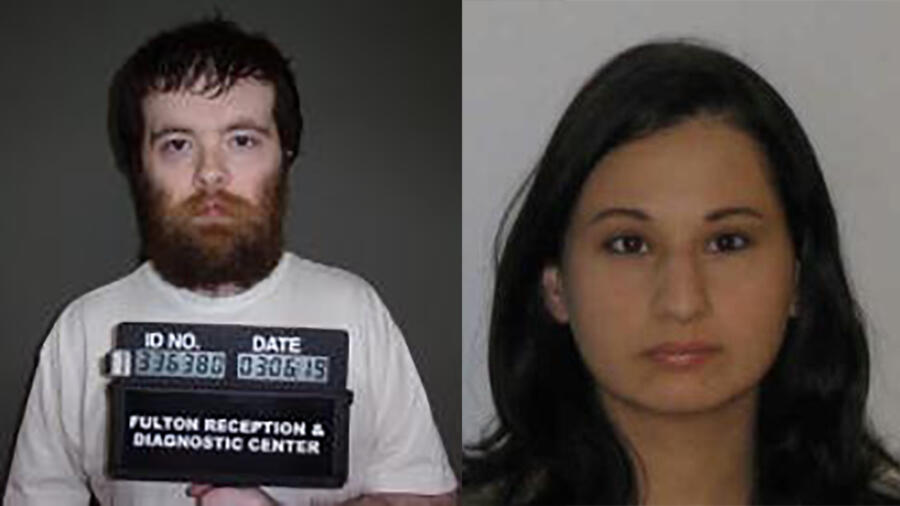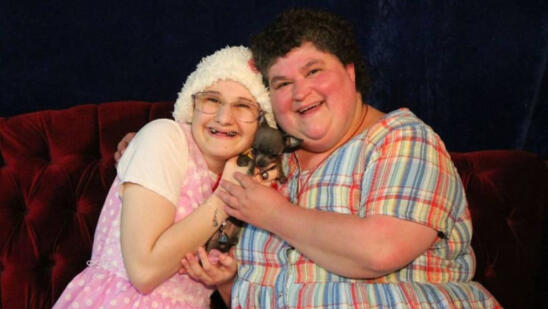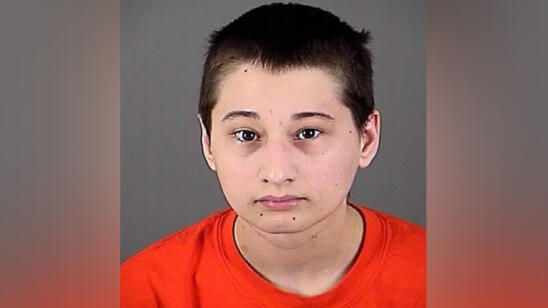Warning: The following contains disturbing descriptions of violence. Reader discretion is advised.
Over the last 50 years, men have committed murder 10 times more often than women. Men are far more likely to be serial killers, mass shooters and family annihilators. Shedding blood, it would seem, is a gendered pursuit.
But just because a woman’s fingerprints aren’t at the crime scene doesn’t mean her fingerprints weren’t on the plan. Over the years, there have been numerous women who have manipulated their male partners to kill at their bidding. A&E True Crime looks at some cases where men have killed for the women they loved.
Nicholas Godejohn
Gypsy Rose Blanchard didn’t look like a killer. She looked like a sickly little girl.
Gypsy Rose suffered a litany of ailments, starting at birth: epilepsy, sleep apnea, chromosomal disorders, leukemia, muscular dystrophy. She underwent extreme intervention measures in doctors’ attempts to make her well: At various points she was on a feeding tube, confined to a wheelchair and prescribed medication that crumbled her teeth inside her mouth. And then, when she was 23 years old, a murder turned the whole story upside down.
Her mother, Clauddine “Dee Dee” Blanchard, was stabbed to death inside of their home. Gypsy Rose was nowhere to be found, but a Facebook post on Dee Dee and Gypsy’s shared page said, “THAT B—- IS DEAD.”
Gypsy Rose had met a young man, Nicholas Godejohn, on a Christian dating website. She confided to him that her illnesses were all fake—either feigned or medically induced by her mother’s poisoning, a psychologically sadistic pattern of “caregiving” known as Munchausen syndrome by proxy (MSbP).
Mary Sheridan, a professor emerita of social work at Hawaii Pacific University and an expert in MSbP, says that Gypsy Rose is already a unique case because the young woman was aware of the abuse she was suffering.
“The majority…of cases occur in children who are way too young to understand what’s going on,” Sheridan tells A&E True Crime. Those who do figure out that they’ve been sickened by their parent often feel “a great deal of anger or hurt.”
“Would you kill my mother for me?” Gypsy Rose asked Godejohn. After he agreed, she provided the medical gloves and the serrated knife. In June 2015, he took care of the rest.
For his role in the murder, Godejohn was found guilty of first-degree murder and given life imprisonment without the possibility of parole. Gypsy Rose was sentenced to a minimum of 10 years in exchange for a guilty plea to second-degree murder—an acknowledgment by prosecutors of the abuse she’d suffered.
Gypsy Rose’s father, Rod Blanchard, says he was unaware of his ex-wife Dee Dee’s actions. But in a 2019 interview with A&E True Crime, he acknowledges that everyone—Dee Dee, the police and himself—all “failed Gypsy.” He and his current wife are actively petitioning Missouri governor Mike Parson to grant Gypsy Rose an early release.
As for what drove Dee Dee to commit abuse in the first place, Sheridan says, “I see this as a tremendous failure in empathy. And I don’t know to what extent empathy is nature and to what extent it’s nurture. But it’s probably both.”
William “Billy” Flynn
Only 22 years old and less than a year into her marriage, high school media specialist and group counselor Pamela Smart was sick of living with her husband, Gregg Smart. They moved to a small town in New Hampshire to advance his career. Then Gregg, a life insurance salesman, had a one-night stand while on the road for work.
Around the same time, Pamela met William “Billy” Flynn, 15 years old, a student volunteer at her group counseling job. They began sleeping together.
That’s when Smart asked William to kill for her, instructing him to make the act look like a home burglary. On May 1, 1990, Flynn and a group of three other teenage boys broke into the Smart condominium. Flynn shot Gregg point-blank in the head while one of the other young men, Patrick Randall, held a knife to his throat.
Smart was convicted of being an accomplice to first-degree murder, conspiracy to commit murder and witness tampering. She was sentenced to life imprisonment without the chance at parole. The four teenagers who committed the murder have since been released.
Smart’s attorney, Mark Sisti, tells A&E True Crime “it’s quite an absurdity” that Smart continues to be incarcerated when the men who committed the crime have gone free.
“These weren’t little boys who got sucked into this,” Sisti says. “As far as her role in the planning and the actual execution, she was no greater or worse than anybody else involved. She certainly wasn’t the one that procured the firearm, that loaded the firearm, that executed her husband. She wasn’t the one that left the scene and obstructed. She’s none of those. She’s probably the least involved.”
Coray Knight
Tennessee woman Kelley Hufford, 45 years old, wanted her boyfriend Jimmy Boyer out of her house. So she got together with a new love interest, Frederick Persinger and her close friend, Coray Knight, and asked that they take care of it.
On May 18, 2013, Boyer was brutally beaten and dragged—still alive—onto a gravel road in Clarksville, where he was killed with a shotgun. His corpse was burned.
Extensive text messaging and phone calls between the trio in the immediate lead-up to (and the aftermath of) the homicide implicated Hufford in the conspiracy.
Hufford was convicted of conspiracy to commit first-degree murder, first-degree premeditated murder, first-degree felony murder, two counts of especially aggravated kidnapping, three counts of aggravated kidnapping and tampering with evidence. She was given life in prison for the felony murder charge and an additional 60 years for the other charges.
Knight was given a sentence of life in prison for his role in the murder, which was upheld during an August 2018 appeal.
Although Persniger, in his mid-60s at the time of his arrest, was charged in the case, his defense introduced records showing that he suffered from Parkinson’s disease, had been diagnosed with dementia and schizophrenia, and had suffered hallucinations, so he was never tried.
Related Features:
The Udens: An Elderly Couple’s Homicidal Love Story
The Woman Who Tried to Kill for the Hillside Strangler
Betty Broderick: Inside the Psychological Battleground that Pushed the Socialite to Commit Murder


